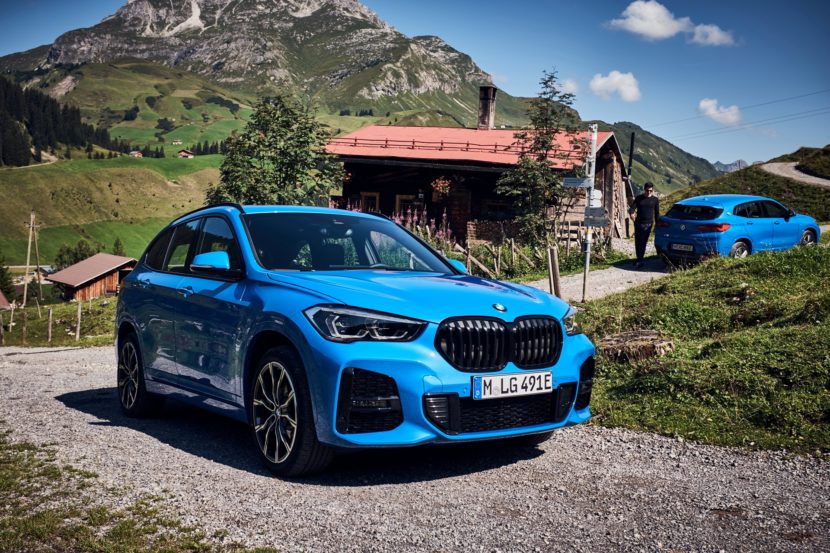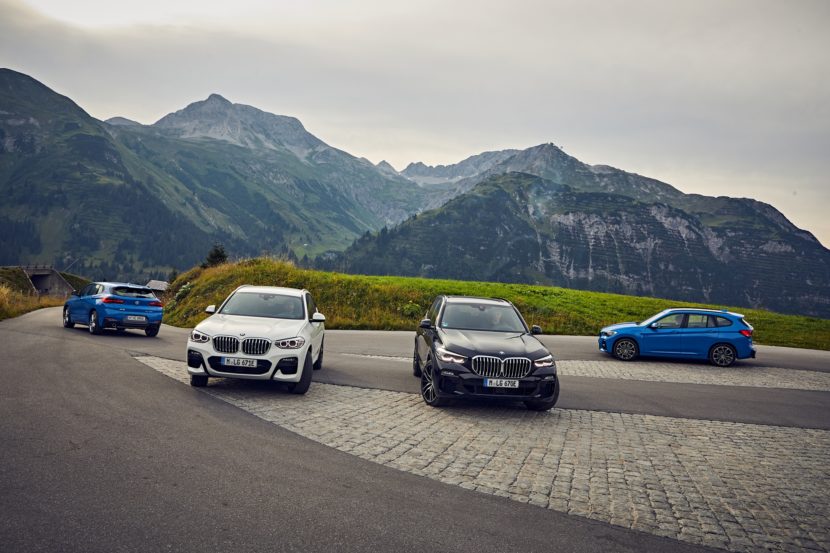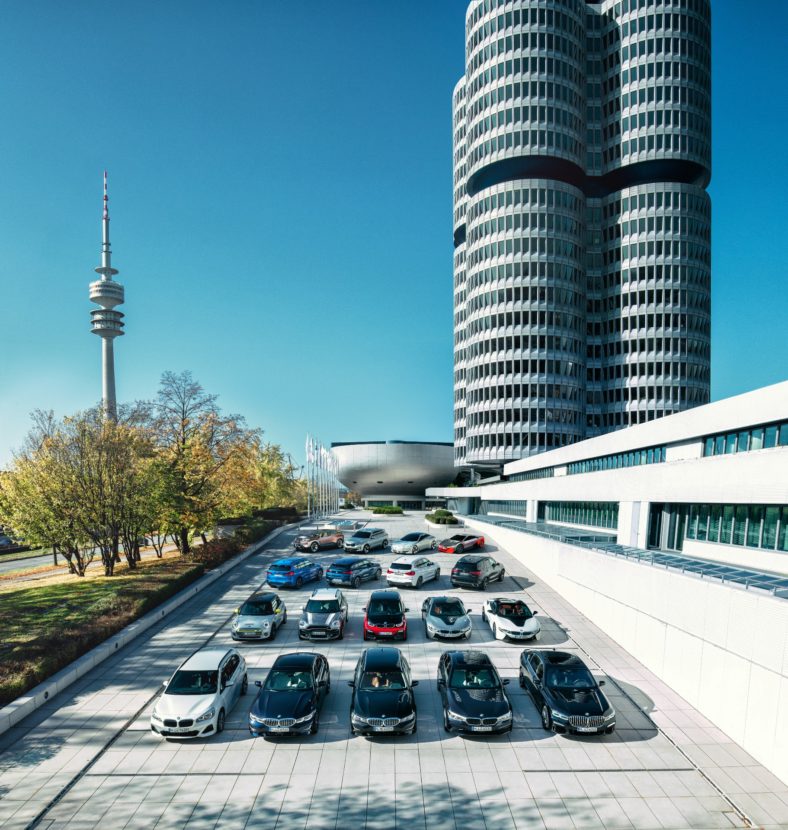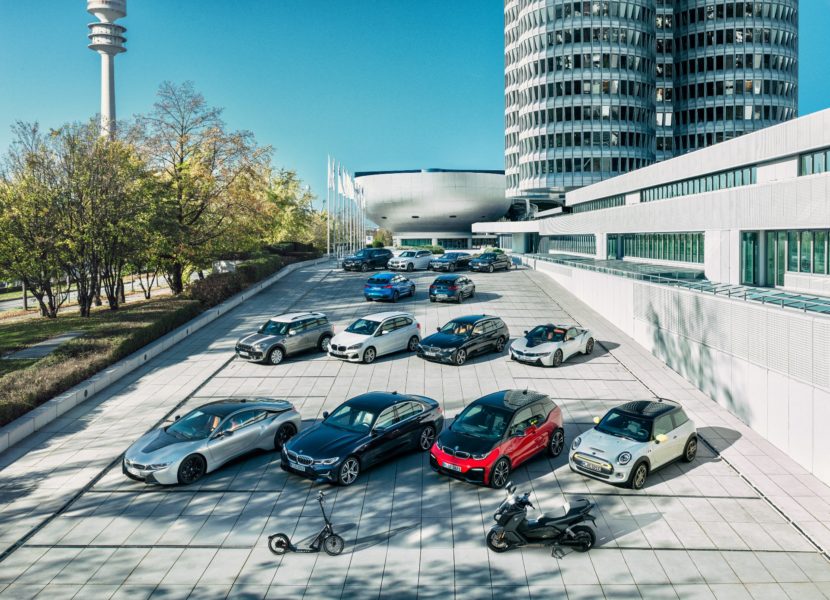BMW further solidifies its position as electric pioneer with the launch of the new compact-sized plug-in hybrid crossovers: the X1 xDrive25e and the X2 xDrive25e. Starting with early 2020, the new plug-in hybrid compact SAV and SAC models are celebrating their official market launch, being made available for clients with immediate effect. Thus, BMW further strengthens its capabilities and model choice in the very popular segment of compact-sized crossovers.
Both electrified models share the same plug-in hybrid powertrain, which comprises of a 1.5-liter, 3-cylinder petrol engine rated at 92 kW / 125 hp mated to an electric motor generating an output of 70 kW / 95 hp. The internal combustion engine powers the front axle through a 6-Speed Steptronic automatic transmission and it is capable of delivering a peak torque of 220 Nm. The electric motor is in charging of powering the rear wheels via a single-speed gearbox. The maximum torque delivered by the electric unit reaches 165 Nm.
Thus, the 3-cylinder engine and the electric powerplant onboard the new X1 xDrive25e and X2 xDrive25e create a hybrid all-wheel-drive configurations which ensures an exceptional traction capacity in every situation, just like a standard, mechanized AWD chassis. What’s more, the hybrid configuration enables a smooth operation and transition between the ICE and the electric unit.
2020 BMW X3 xDrive30e plug-in hybrid priced slightly below $50,000
In addition, the electric motor is positioned right above the rear axle, as to ensure a balanced and efficient weight distribution on the two axles and a low center of gravity. Nonetheless, this architecture ensures an adequate level of agility and driving pleasure in true BMW style, but jeopardizes the trunk storage capacity.
The performance numbers for the two plug-in hybrids indicate a peak output of 162 kW / 220 hp and maximum torque of 385 Nm. This is enough to propel the new X1 xDrive25e from 0 to 100 km/h in 6.9 seconds. The new X2 xDrive25e is a bit faster in this category, as it manages to accelerate from standstill to 100 km/h in 6.8 seconds. The top speed reaches 193 km/h in the X1 xDrive25e, while for the X2 xDrive25e it hits 195 km/h.
At the heart of the plug-in hybrid configuration stands the new high-voltage lithium-ion battery with a gross energy content of 10 kWh. It thus enables an all-electric range between 54 and 57 kilometers in the X1 xDrive25e and between 55 and 57 kilometers in the X2 xDrive25e. All figures are calculated according to the WLTP cycle.
The high-voltage battery can be recharged at conventional household sockets using the charging cable which is offered as standard equipment. It takes about 3.8 hours to reach an 80% level. Using the dedicated BMW i Wallbox, the battery can recharge up to 80% of its capacity in 3.2 hours. As widely known from other BMW plug-in hybrid models, the electric charging port is to be found on the front left wing of the cars, by opening the flap that protects it.
Fuel consumption levels are equally attractive for both models, not to mention the low CO2 emission figures. The new X1 xDrive25e manages 2.1 to 1.9 liters per 100 kilometers, with CO2 emissions between 48 and 43 grams per kilometer, while the new X2 xDrive25e boasts 2.1 to 1.9 liters per 100 kilometers and CO2 emissions between 47 and 43 grams per kilometer. The combined electric power consumption is estimated at 14.3 to 13.8 kWh per 100 kilometers in the plug-in hybrid X1, while for the electrified X2 it reaches 14.2 to 13.7 kWh per 100 kilometers.
The 500,000th electrified BMW Group vehicle delivered at BMW Welt
Besides the standard COMFORT, SPORT and ECO PRO driving modes, the intelligent AUTO eDRIVE, MAX eDRIVE and SAVE BATTERY modes are available in the new X1 xDrive25e and X2 xDrive25e. The Auto eDRIVE configuration ensures an optimal cross-functioning of the two powering units. It also offers the anticipatory energy management when route guidance is turned on, as to properly adapt the drive system to the route profile.
The MAX eDRIVE mode makes the most use of the electric motor. The all-electric driving configuration extracts the most juice of the battery for increased efficiency. In MAX eDRIVE, the top speed is limited to 135 km/h for plug-in hybrid models. Last, but not least, the additional SAVE BATTERY mode relies on an intelligent and efficient energy management, which enables the driver to maintain the charging state of the battery by driving or to increase it by means of recuperation. The extra energy saved could be later on used for pure electric driving in the city.
As per European Union regulations, the new X1 xDrive25e and X2 xDrive25e are equipped with a standard pedestrian acoustic alert system. This solution helps other road users become aware of the car when driving electrically at speeds of up to 30 km/h. The electric sound was specifically designed by BMW as to have a unique and recognizable signature, without creating an acoustic discomfort for the occupants inside the car.
Standard equipment for the compact plug-in hybrids comprises 2-zone air conditioning, 17-inch alloy wheels and auxiliary air conditioning (using the BMW Connected app via a smartphone). Besides these, the standard equipment and all options available for the conventional ICE-powered versions of the X1 and X2 are available on the plug-in hybrid variants as well. The new X1 xDrive25e can be ordered in Sport Line, xLine and M Sport trims, whereas the new X2 xDrive 25e is available for the Advantage, Advantage Plus, M Sport and M Sport X models.
Given the electrified powertrain and its capabilities reflected by the decent electric range and low CO2 emissions, the new BMW X1 xDrive25e and X2 xDrive25e models benefit from reduced company car taxation in Germany and several other preferential advantages, such as the specific license plates ending in the letter “E” and a special treatment for calculating the monetary benefit from private use of the car (only half of the gross list price is considered).
With the advent of the new X1 xDrive25e and X2 xDrive25e, BMW rounds off a powerful fleet of electrified vehicles which also includes the 225xe Active Tourer, the 330e, the 530e, the 745e/745Le, the X3 xDrive30e and the X5 xDrive45e. On a group perspective, BMW aims to sell 25% electric powertrain vehicles in Europe by 2021, 33% by 2025 and 50% by 2030.
Up to the end of 2023, BMW plans to add no less than 25 different electric and plug-in hybrid models in its portfolio. By the end of 2021, BMW aims to sell more than 1,000,000 electrified cars worldwide.









































































